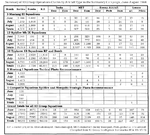buffnut453
Captain
There is an excellent book, where the author has brought out great details of it's combat record and provides some excellent photos, several have never been published before, too. I really recommend getting for your library.
Vengeance! The Vultee Vengeance Dive Bomber by Peter C. Smith (ISBN 978-0906393655)
Peter C. Smith never met a dive bomber he didn't like.




